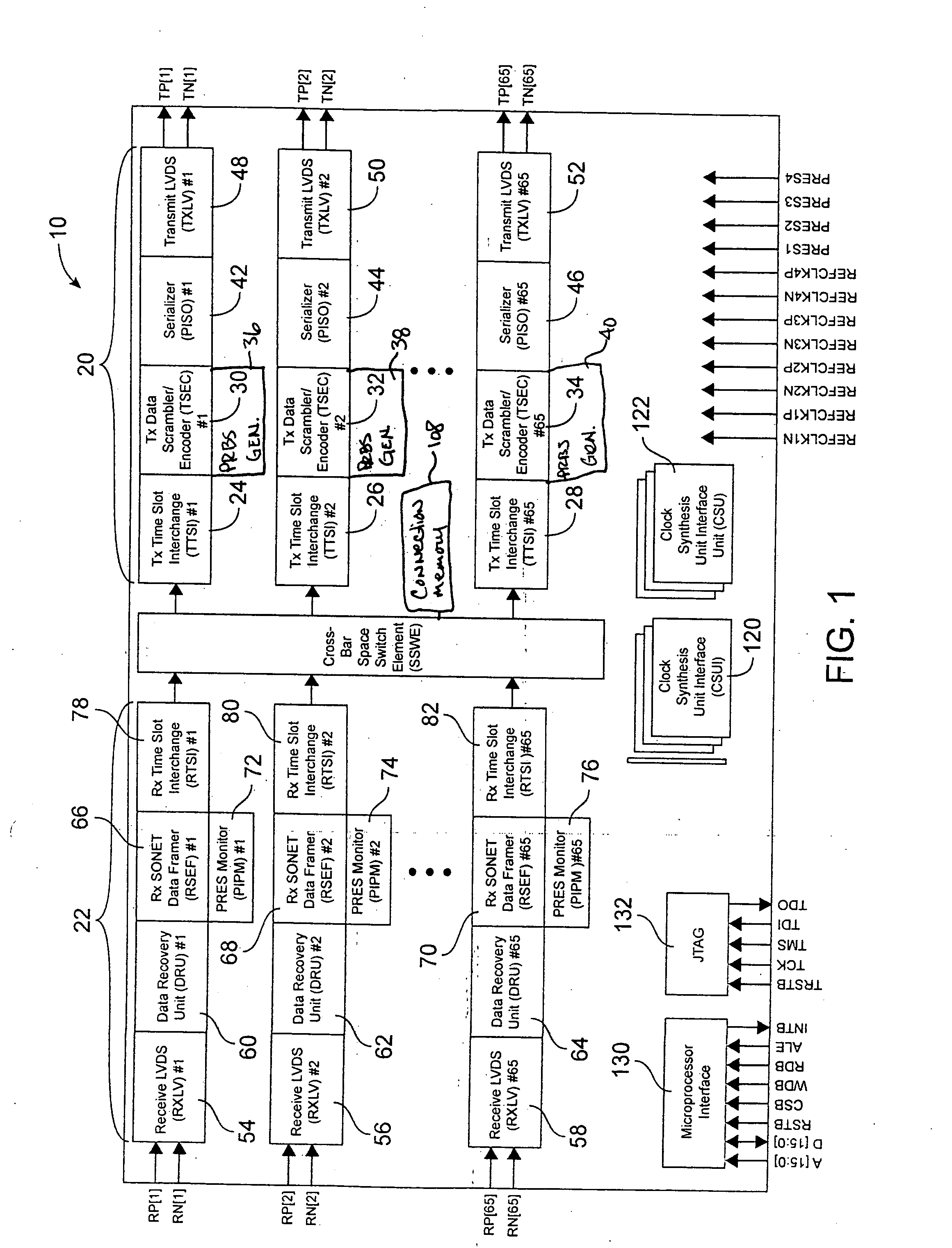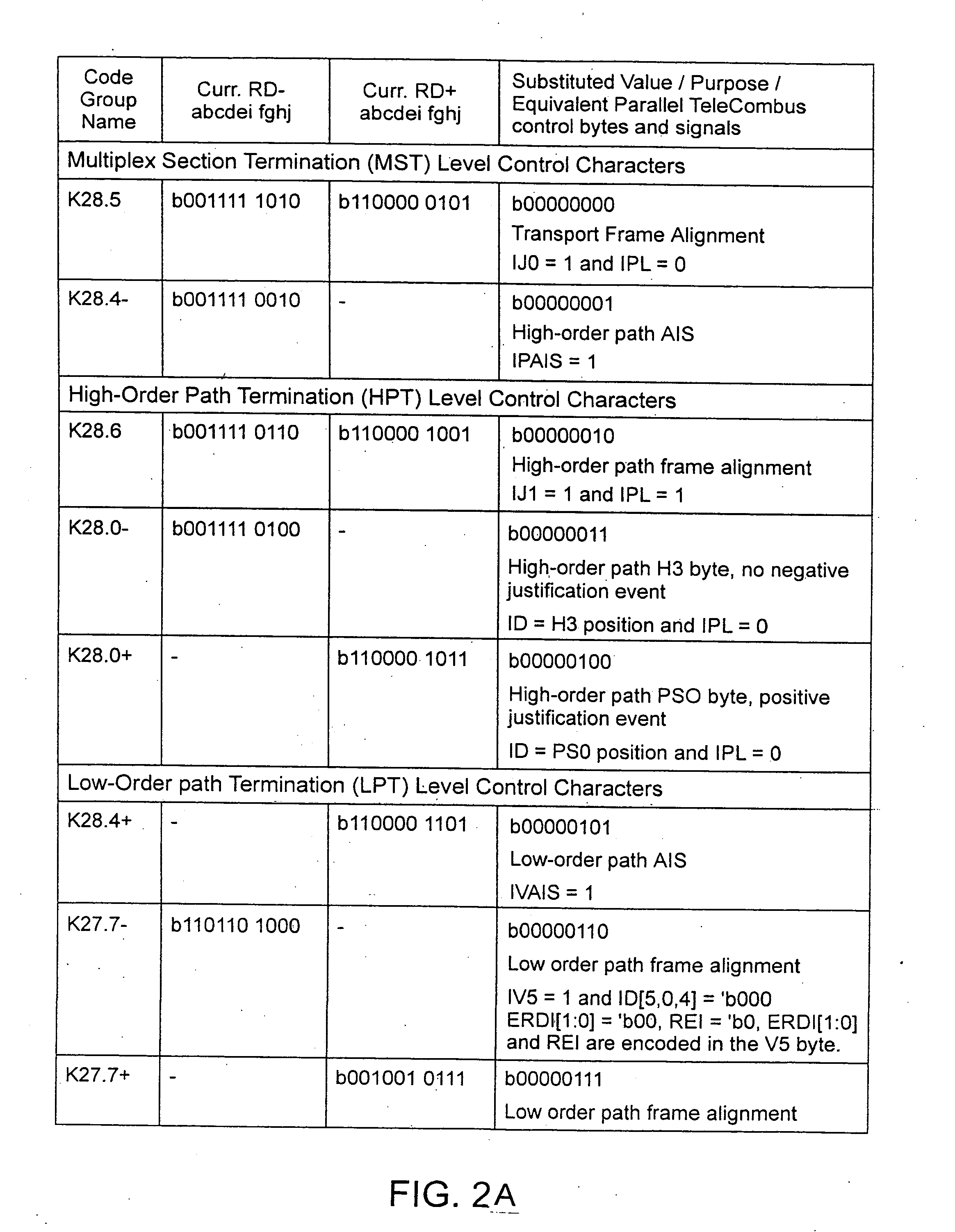Bus interface for transfer of multiple SONET/SDH rates over a serial backplane
a serial backplane and data rate technology, applied in data switching networks, multiplex communication, digital transmission, etc., can solve the problems of oc-3 streams and the requirement of duplicate sonet/sdh processing at the payload processing devi
- Summary
- Abstract
- Description
- Claims
- Application Information
AI Technical Summary
Benefits of technology
Problems solved by technology
Method used
Image
Examples
Embodiment Construction
[0029] Referring to FIG. 1, an embodiment of the bus interface 10 is depicted. The transmit module 20 is comprised of Transmit Data Scrambler / Encoder (TSEC) blocks 30, 32, and 34, respectively, Pseudo-Random Bit Sequence generators 36, 38, and 40, Serializer (PISO) blocks 42, 44 and 46, respectively, and Transmit LVDS (TXLV) blocks 48, 50 and 52, respectively.
[0030] The receive module 22 is comprised of Receive LVDS (RXLV) blocks 54, 56, and 58, Data Recovery Units (DRU) 60, 62, and 64, Receive SONET Data Framer (RSEF) blocks 66, 68, and 70, PRBS monitor (PIPM) blocks 72, 74, and 76.
[0031]FIG. 1 shows the use of the serial link technology which is the subject of this patent in a typical application. The application is an STS-1 granular time division multiplexing switch. The switching application is supported by the Transmit Time-slot Interchange (TTSI) blocks 24, 26 and 28, respectively, the Receive Time Slot Interchange (RTSI) blocks 78, 80, and 82, the Cross-Bar Space Switch Ele...
PUM
 Login to View More
Login to View More Abstract
Description
Claims
Application Information
 Login to View More
Login to View More - R&D
- Intellectual Property
- Life Sciences
- Materials
- Tech Scout
- Unparalleled Data Quality
- Higher Quality Content
- 60% Fewer Hallucinations
Browse by: Latest US Patents, China's latest patents, Technical Efficacy Thesaurus, Application Domain, Technology Topic, Popular Technical Reports.
© 2025 PatSnap. All rights reserved.Legal|Privacy policy|Modern Slavery Act Transparency Statement|Sitemap|About US| Contact US: help@patsnap.com



